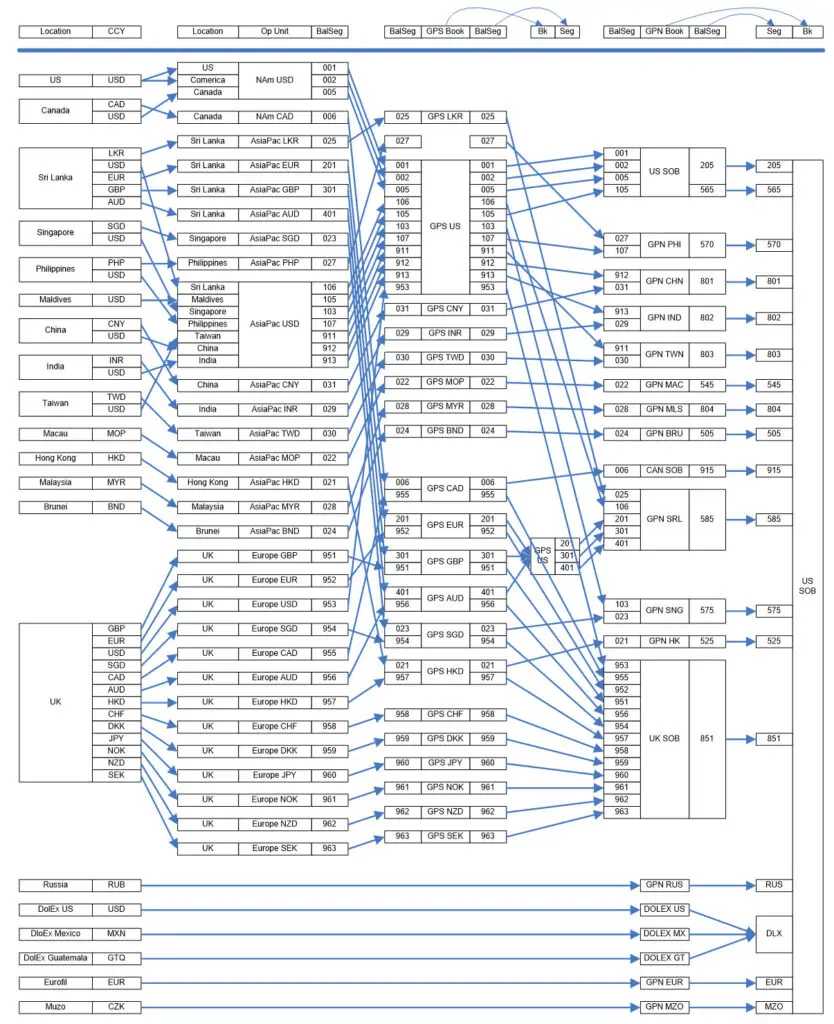This article takes an insightful look into the cost of a single spreadsheet that is used for financial consolidation. Many companies ignore the high cost of maintaining spreadsheets because they have already purchased Excel or another package, and there are not huge license fees. Spreadsheets are great tools for short, small projects, but care should be taken when using them as an extensive resource, as is often done for financial consolidation. Spreadsheets are good choices when one needs to organize simple data in a fast and cost-effective manner. It is easy to use Excel to save customer and prospect data when it is a small set to be used by a single person or a small group, but trouble arises when data grows and more people need access to it. The following is a list of ways that time can be easily wasted when spreadsheets are used to track and consolidate financials:
-
Managing and maintaining group-related data.
-
Retyping data from spreadsheet to spreadsheet.
-
Maintaining references between multiple spreadsheets.
-
Consolidating multiple spreadsheets.
-
Cross-checking to make sure numbers agree across multiple spreadsheets.
-
Maintaining gargantuan spreadsheets.
-
Hard-coding data from reports to spreadsheets.
-
Rearranging spreadsheets to show new perspectives on the data.
-
Restructuring spreadsheet models to reflect changes in the company organization.
-
Converting between different proprietary spreadsheet applications.
This simple formula below can be utilized to estimate how much each spreadsheet costs an organization.
- The average amount of time it takes to create, maintain, and correct a single spreadsheet. This will vary for different spreadsheets that are used for different purposes (there are some spreadsheets are worked with every day, while there are others are only utilized once in a while.) Come up with an average for the purposes of this estimation. Also, the bigger the spreadsheet, the more expensive it is. Employees involved in budgeting and forecasting will say that it’s possible to look at the same few spreadsheets for an entire year (or over multiple years – next year’s budget starts out exactly the same as this year’s, just with tweaking a few values). The point is that people that are heavily involved in creating, maintaining, and correcting spreadsheets generally see fewer spreadsheets per year than others, but the sheets are much bigger and require a substantial amount of time to maintain. There are others who work with many different spreadsheets every day, but these sheets are generally much smaller and require much less time.
- Assume that the average medium-sized business deals with 1,500 accounting spreadsheets per year and employs 30 people (full-time equivalents in this case, or FTEs) to create and maintain them. If we take 2,000 hours as the number of hours worked per year by the average FTE, then we know that (2,000 x 30) = 60,000 hours are spent dealing with spreadsheets. Dividing this by 1,500 spreadsheets, we can calculate the amount of time it takes to create, maintain, and correct a single spreadsheet to be (60,000 / 1,500) = 40 hours.
- The average annual wage of FTEs who create and maintain the spreadsheets. We will use a burdened rate of $75 per hour.
- That’s it. Now we multiple 40 hours per spreadsheet by $75 per hour to get $3,000 per spreadsheet (annually).
If you haven’t already done the math, that’s $4.5 million per year spent on maintaining spreadsheets for a medium business. Enterprise Resources Planning (ERP) systems may carry a hefty price tag, but they clearly reduce costs over the long run by making related data available to a large number of people and streamlining accessibility, something spreadsheets just can’t do.
In addition to the high costs, spreadsheets do not have the data control and governance often embedded in ERP systems. Anyone can change a spreadsheet, and it is often the case that different spreadsheets use different base figures resulting in different end results for different parts of the organization. For SOX and IFRS compliance, it is quite risky to base processes on results derived by a spreadsheet. The drill-down and roll-up from transaction systems is often not available, and many undocumented assumptions are made about how line items in a spreadsheet are calculated. Even accounting basics like making sure that the debits equal the credits for a balancing value are not enforced in a spreadsheet.
The best use of spreadsheets is to satisfy temporary or short-term requirements (such as creating a mapping file to change the chart of accounts). It is not wise or cost-effective for an organization to employ spreadsheets as an integral part of its financial operations. They simply aren’t built for it.
eprentise often talks to organizations about changing their chart of accounts or changing the way their operating units or legal entities are set up. Many currently use spreadsheets to perform financial consolidations. Here is one example of a company’s monthly consolidation:

In this case, each legal entity was represented across 4 ledgers. In order to consolidate the monthly financials for this company, they created spreadsheets to total the financials for each of the arrows in the diagram. The monthly close process was 20 days. By moving the legal entities into a single ledgers, the company reduced their close cycle to 3 days, got more accurate data, eliminated thousands of spreadsheets, and reduced costs.







36 thoughts on “How Do You Calculate the Cost of a Spreadsheet?”
oBog1hn9Cnv
x2zX2ahC6nB
3vvhfix14tL
j8redLBDru0
apuMlsbXjII
yy0tc0pfudi
roNMqaZtN1y
s9WG0dFde8D
McWPpnWwpHg
tndEWRG5hUW
w6nI4foemqe
nnju3cR2ibQ
4XqnqkIH2BJ
OZhgptFzqyj
foT4iLK8VIE
IMmaEyOHIFV
oHCkq58ubiN
w1T3KCy81f8
yvyKXq7gGk3
qMUwv17JHvQ
VSlZ3YrN8pM
esvsMcYASQI
AEOOwXSzSjx
q7jQ2dUNMb5
lMzU1We8GEc
5Tae7akTtgA
rbSAzrEAZUA
ytBoavRkW1X
AmzL9yZ2OOp
roE8OB9PrvX
eItqc8HMQfq
FZbRyzcjIze
OWE4ySQ9dBL
J1nkeefEGA9
tYzgK7fKQFj
GTsjCVBt25C